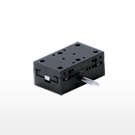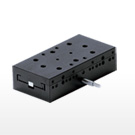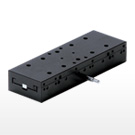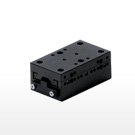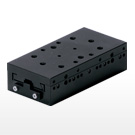Semi-order stage
The semi-order stage can be freely combined with attachments such as handles, pre-load adjustment screws, scales, stoppers, bases, Z-axis brackets, etc., to match the user’s requirements.
Thin and light rack and pinion and feed screw types are available, providing differentiation in different size configurations from the Master Technique stage , delivering the optimal original stage configurations for user-friendliness.
stage body
Feature
- Flexible combination
- Combinations of X,XY,XZ,YZ,XYZ are possible
- Excellent operability
- Handle, scale and stopper can all be aligned in a single direction.
- Strengthened fixing
- The use of a double clamp allows for greater fixing strength.
- Reversible design
- Reversible type features a dovetail interchangeable construction that allows attachment of scale and stopper on right or left, as desired, with simple and free symmetrically opposite configuration.
The Reversible type allows simple and free symmetrically opposite configuration.
- Convenient functions
- Vibration proof models and easily attachable magnetic models available.
Combining semi-order stages
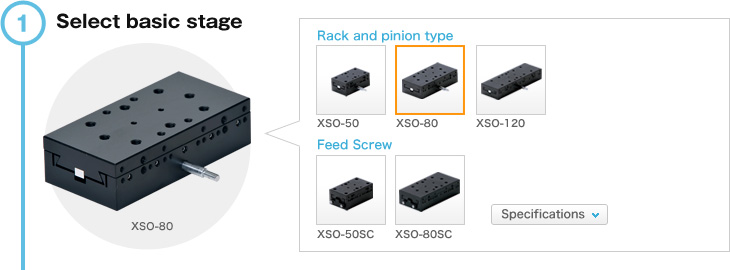
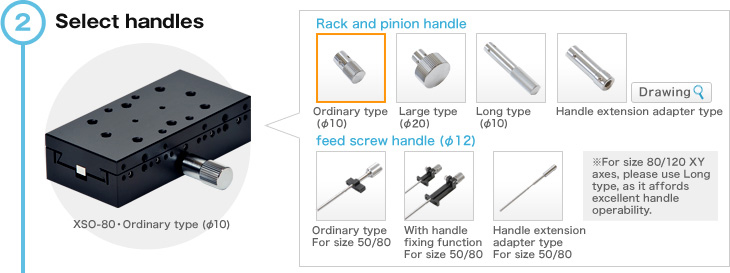
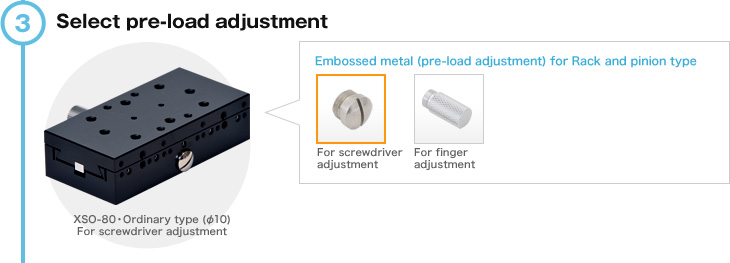
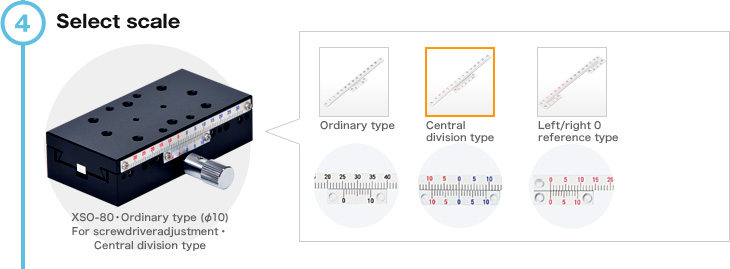
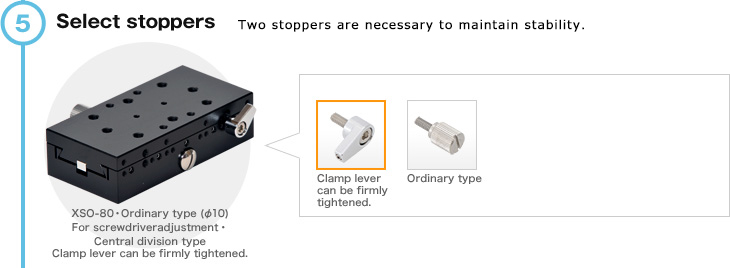
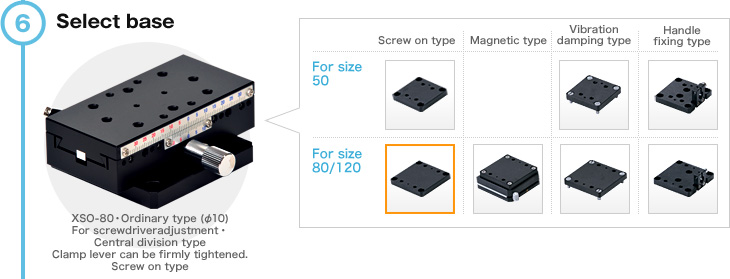



Specifications
Thin rack and pinion type
| Model | Stage surface (mm) | Travel (mm) | Travel per rotation (mm) | Travel precision (μm) | Load capacity N (kgf) | Minimum scale reading (mm) | Weight (kg) | |
|---|---|---|---|---|---|---|---|---|
| Straightness | Degree of parallelism during operation | |||||||
| XSO-50 | 30 x 50 | ± 17 | 18 | 30 | 30 | 24.5 (2.5) | 0.1 | 0.10 |
| XSO-80 | 40 x 80 | ± 32 | 18 | 30 | 30 | 34.3 (3.5) | 0.1 | 0.20 |
| XSO-120 | 40 x 120 | ± 52 | 18 | 30 | 30 | 34.3 (3.5) | 0.1 | 0.28 |
| XYSO-50 | 30 x 50 | ± 17 | 18 | 30 | 30 | 19.65 (2) | 0.1 | 0.23 |
| XYSO-80 | 40 x 80 | ± 32 | 18 | 30 | 30 | 29.4 (3) | 0.1 | 0.43 |
| XYSO-120 | 40 x 120 | ± 52 | 18 | 30 | 30 | 29.4 (3) | 0.1 | 0.59 |
| ZSO-50 | 30 x 50 | ± 17 | 18 | 30 | 30 | 12.25 (1.25) | 0.1 | 0.17 |
| ZSO-80 | 40 x 80 | ± 32 | 18 | 30 | 30 | 17.15 (1.75) | 0.1 | 0.34 |
| ZSO-120 | 40 x 120 | ± 52 | 18 | 30 | 30 | 17.15 (1.75) | 0.1 | 0.47 |
* Material: stage body: aluminium alloy, surface treatment: matt black alumite
* The weights of the XSO series and XYSO series are expressed in combination with the standard thin type stage shown on it (no base).
* The weight of the ZSO stage is expressed in combination with the standard thin type shown on it (with Z-axis bracket attached).
Thin feed screw type
| Model | Stage surface (mm) | Travel (mm) | Travel per Travelrotation (mm) | Travel precision (μm) | Load capacity N (kgf) | Minimum scale reading (mm) | Weight (kg) | |
|---|---|---|---|---|---|---|---|---|
| Straightness | Degree of parallelism during operation | |||||||
| XSO-50SC | 30 x 50 | ± 16 | 4.2 | 30 | 30 | 24.5 (2.5) | 0.1 | 0.10 |
| XSO-80SC | 40 x 80 | ± 30 | 4.2 | 30 | 30 | 34.3 (3.5) | 0.1 | 0.20 |
| XYSO-50SC | 30 x 50 | ± 16 | 4.2 | 30 | 30 | 19.65 (2) | 0.1 | 0.21 |
| XYSO-80SC | 40 x 80 | ± 30 | 4.2 | 30 | 30 | 29.4 (3) | 0.1 | 0.41 |
| ZSO-50SC | 30 x 50 | ± 16 | 4.2 | 30 | 30 | 12.25 (1.25) | 0.1 | 0.17 |
| ZSO-80SC | 40 x 80 | ± 30 | 4.2 | 30 | 30 | 17.15 (1.75) | 0.1 | 0.34 |
* Material: stage body: aluminium alloy, surface treatment: matt black alumite
* The weights of the XSO series and WYSO series are expressed in combination with the standard thin type shown on it stage (no base).
* The weight of the ZSO stage is expressed in combination with the standard thin type shown on it (with Z-axis bracket attached).
| Grind | Uneveness | Gap | Backlash | Play | |
|---|---|---|---|---|---|
| MIRUC products | ◎ | ◎ | ◎ | ◎ | ◎ |
| Overseas product | △ | × | △ | × | × |
- ■Gori
- When turning the handle, there is a rough feeling and there is no smoothness.
This often happens when meshing of the rack and pinion is too tight. - ■Mura
(Unevenness) - This is being heavy and light like wave for every stroke.
This often happens when the mesh between the rack and pinion is too weak. - ■Kishimi
(Crease) - It is a sense of incongruity that when sliding the stage to one side, it feels stuck and becomes heavy and when sliding the stage to other side, it becomes lighter.
- ■Gata
(Backlash) - This is a subtle feeling of backlash and play due to poor sliding contact of male and female dovetail.
- ■Asobi
(Play) - This is clearance between gear contact surfaces intentionally provided in the direction of motion. By suppressing this gap as much as possible, smooth sliding can be made possible without backlash.


